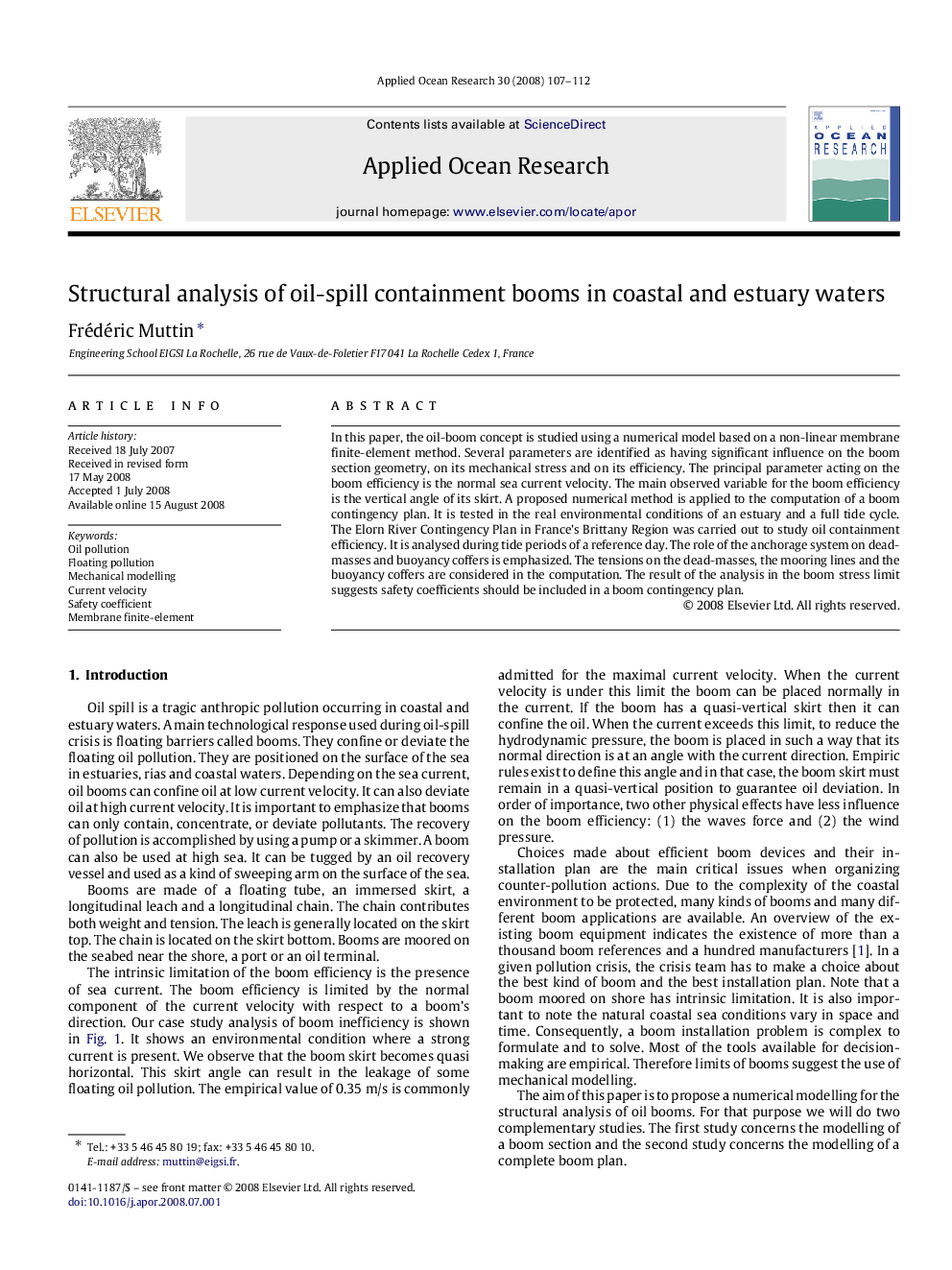| Article ID | Journal | Published Year | Pages | File Type |
|---|---|---|---|---|
| 1720452 | Applied Ocean Research | 2008 | 6 Pages |
In this paper, the oil-boom concept is studied using a numerical model based on a non-linear membrane finite-element method. Several parameters are identified as having significant influence on the boom section geometry, on its mechanical stress and on its efficiency. The principal parameter acting on the boom efficiency is the normal sea current velocity. The main observed variable for the boom efficiency is the vertical angle of its skirt. A proposed numerical method is applied to the computation of a boom contingency plan. It is tested in the real environmental conditions of an estuary and a full tide cycle. The Elorn River Contingency Plan in France’s Brittany Region was carried out to study oil containment efficiency. It is analysed during tide periods of a reference day. The role of the anchorage system on dead-masses and buoyancy coffers is emphasized. The tensions on the dead-masses, the mooring lines and the buoyancy coffers are considered in the computation. The result of the analysis in the boom stress limit suggests safety coefficients should be included in a boom contingency plan.
